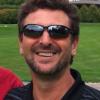Turf Geek Day One
The first day of scientific papers at the Turfgrass Science Division (C-5) is reserved for graduate student research presentations. Many of these bright folks are standing up in front of their scientific peers for the first time. I sat for over 7 hours listening to the latest in turfgrass research in 15 minute snip-its (that is the allotted time each presenter is given). It was GREAT!
Presentations ranged from bio-informatics (using molecular techniques to decipher plant responses) and herbicide metabolism (how plants detoxify herbicides internally) to establishing clover into and existing stand of turf and the effects of potassium fertilization on anthracnose.
Of course I find all of the work fascinating in some way, but I was especially keen on the potassium fertilization work by Chaz Schmid with Jim Murphy and Bruce Clarke from Rutgers University. Researchers noted the use of potassium nitrate tended to decrease severity of anthracnose. So an experiment was designed to investigate the role of N and K on anthracnose incidence and severity.
A variety of K rates and sources were applied based on interpretation of soil test results from the top few inches of sand/mat layer above push-up native soil. Properly evaluating the correct soil K level insured they had K deficiency in the plots. Therefore when K was applied, regardless of source, anthracnose was reduced. N rate levels were below BMP rates suggested by previous anthracnose research, however when K was deficient (less than 50 mg/kg (Mehlich-3)) adding N DID NOT reduce anthracnose. Interestingly when soil K was adequate, there was no benefit from adding additional K.
Off to day 2!



0 Comments
Recommended Comments
There are no comments to display.